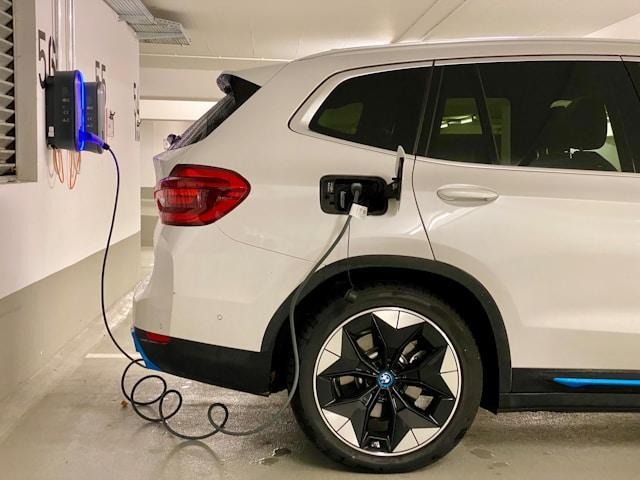Imagine a delivery company juggling vehicle fuel expenses and tracking — even remote driver locations matter. Here's how fleet cards help monitor purchases, control spending, streamline reporting, and boost efficiency. For businesses managing multiple vehicles, earnify fleet cards, offer fleet fueling solutions with cost-savings and tracking for efficient vehicle fleet operationals.
What is a Fleet Card?
A fleet card is a specialized payment solution designed for businesses to manage fuel and vehicle-related expenses across their entire fleet. These cards function like credit cards but include advanced tracking, reporting, and control features specifically tailored for monitoring driver purchases, fuel consumption, and maintenance costs. Unlike traditional payment methods, they provide real-time visibility into every transaction while offering automated expense management and detailed analytics.
Imagine a Delivery Company Seeking Control
The challenge: costs, driver locations, unauthorized expenses
Picture a regional delivery service operating 50 vehicles across three states. Their accounting team spends hours reconciling receipts, managers can't track where drivers refuel, and unauthorized purchases slip through monthly. Fuel costs fluctuate unpredictably, maintenance schedules get missed, and there's no clear picture of which vehicles consume the most resources. The lack of centralized control creates operational blind spots that directly impact the bottom line.
Solution: implementing fleet cards for real-time tracking and efficiency
By implementing a comprehensive card program, this same company gains instant visibility into every transaction. Drivers can only purchase fuel at approved locations during authorized hours. Managers receive alerts for unusual spending patterns, maintenance reminders trigger automatically based on mileage data, and detailed reports reveal optimization opportunities. The result: 15% reduction in fuel expenses within six months and complete elimination of unauthorized purchases.
Key Features and Benefits of Fleet Cards
Spend controls and purchase limits
Modern solutions offer granular purchase controls that prevent misuse before it happens. Administrators set specific parameters including daily spending limits, approved merchant categories, and time-of-day restrictions. Some platforms allow vehicle-specific limits based on tank capacity, preventing drivers from filling unauthorized containers. Geographic boundaries ensure purchases only occur within designated service areas, while product restrictions can limit transactions to fuel only or include maintenance services as needed.
Automated expense tracking and reporting
Every transaction flows directly into centralized reporting systems, eliminating manual data entry and reducing errors. Detailed analytics show spending patterns by driver, vehicle, location, and time period. Customizable dashboards highlight key metrics like cost per mile, fuel efficiency trends, and maintenance schedules. Integration with accounting software automates expense categorization and simplifies tax preparation, while real-time alerts notify managers of policy violations or unusual activity immediately.
Savings: discounts, rebates, and network access
Strategic partnerships with fuel networks deliver immediate cost reductions through negotiated discounts and volume-based rebates. Many programs offer savings of 3-8 cents per gallon at participating stations, with some providing additional rebates based on monthly volume. Access to extensive networks ensures drivers find participating locations anywhere in the U.S., reducing detours and maximizing operational efficiency. Premium tier programs may include maintenance discounts, tire services, and roadside assistance benefits.
Security features and fraud prevention
Advanced security measures protect against both external fraud and internal misuse. PIN requirements, driver ID verification, and odometer tracking create multiple authentication layers. Real-time monitoring flags suspicious patterns like duplicate transactions, after-hours purchases, or geographic anomalies. Card deactivation happens instantly through mobile apps or web platforms if theft occurs. Some solutions include AI-powered fraud detection that learns normal patterns and automatically blocks unusual activity.
Integrations with business operations and management tools
Seamless integration with existing fleet management platforms creates a unified operational view. GPS tracking systems sync with transaction data to verify vehicle locations during purchases. Maintenance management software receives mileage updates automatically, triggering service reminders. Accounting platforms import expense data directly, while HR systems track driver compliance and training requirements. API connections enable custom integrations with proprietary business systems.
How to Choose the Right Fleet Card
Comparing fuel networks and discount structures
Network coverage varies significantly between providers, affecting both convenience and savings potential. National programs like WEX offer access to 95% of U.S. gas stations, while regional options may provide deeper discounts within specific territories. Consider your typical routes and driver locations when evaluating coverage. Compare discount structures carefully — some offer fixed cents-per-gallon savings while others provide percentage-based rebates that fluctuate with fuel prices. Factor in any volume commitments required to access premium discount tiers.
Evaluating reporting depth and analytics
Reporting capabilities range from basic transaction logs to sophisticated predictive analytics. Essential features include real-time visibility, customizable reports, and automated alerts. Advanced platforms offer benchmarking against industry averages, fuel efficiency optimization recommendations, and predictive maintenance scheduling. Consider whether you need API access for custom reporting or if standard dashboards meet your needs. Evaluate data export options for integration with existing business intelligence tools.
Considering EV charging and future needs
As fleets transition to electric vehicles, charging network access becomes crucial. Leading providers now include EV charging stations in their networks, with specialized reporting for electricity consumption versus traditional fuel. Look for solutions that track total energy costs across mixed fleets and provide unified reporting regardless of vehicle type. Consider providers investing in charging infrastructure partnerships and those offering sustainability reporting features for environmental compliance.
Step-By-Step: Getting Started with Fleet Cards
Application and setup
The application process typically requires business verification, tax identification numbers, and financial information. Most providers complete approval within 24-48 hours for established businesses. During setup, you'll configure account hierarchies, assign administrative roles, and establish spending policies. Card distribution methods vary — some mail directly to drivers while others ship to central locations. Expect to receive welcome kits with training materials and quick-start guides for administrators.
Policy creation and purchase control settings
Effective policies balance operational flexibility with spending control. Start by defining authorized purchase categories, typically limiting cards to fuel and basic maintenance initially. Set transaction limits based on vehicle tank capacity plus a reasonable buffer. Establish time-of-day restrictions that align with business hours while accommodating legitimate overtime needs. Create escalation procedures for limit override requests and document consequences for policy violations. Regular policy reviews ensure controls remain appropriate as operations evolve.
Driver training and app usage
Successful implementation requires comprehensive driver education covering both compliance and convenience features. Training sessions should demonstrate proper card usage, PIN security, and receipt management procedures. Mobile app features like station locators, price comparisons, and digital receipt capture improve driver experience while ensuring compliance. Provide quick reference guides for common scenarios and establish support channels for questions. Regular refresher training reinforces best practices and introduces new features as they become available.
Using Data and Analytics to Optimize Operations
Real-world reporting examples: cost reduction
A transportation company discovered through detailed analytics that drivers consistently refueled at premium-priced stations despite cheaper alternatives nearby. By implementing location-based alerts directing drivers to preferred stations, they reduced average fuel costs by 12%. Another business identified vehicles with declining fuel efficiency through trend analysis, scheduling preventive maintenance that improved fleet-wide MPG by 8%. Weekly exception reports revealed one driver making excessive non-fuel purchases, leading to policy clarification that saved $500 monthly.
Monitoring driver behavior and vehicle maintenance
Behavioral insights from transaction data reveal optimization opportunities beyond simple cost control. Frequent small purchases might indicate inefficient routing, while consistently late-night transactions could signal scheduling issues. Odometer readings collected at each fill-up create accurate mileage logs for maintenance scheduling and depreciation calculations. Comparing fuel efficiency across similar vehicles identifies units needing service or drivers requiring efficiency training. Integration with telematics systems correlates aggressive driving behaviors with increased fuel consumption.
Compliance and audit readiness
Automated record-keeping simplifies regulatory compliance and audit preparation. Digital transaction records with detailed line items replace boxes of paper receipts. IFTA reporting becomes straightforward with automatic state-by-state fuel tax calculations. Expense categorization aligns with IRS requirements for business deductions. Custom reports demonstrate policy compliance for insurance audits or safety certifications. Data retention policies ensure historical information remains accessible for the required timeframes while managing storage costs.
Common Questions about Fleet Cards
Coverage typically extends nationwide through partnerships with major fuel brands and independent stations. Most programs work at 90% or more of U.S. locations, with mobile apps helping drivers locate participating stations. International coverage varies by provider, with some offering limited Canadian or Mexican access.
Fee structures include monthly account fees, per-card charges, and transaction fees. Many providers waive fees for accounts meeting minimum volume requirements. Hidden costs might include rush delivery charges, replacement card fees, or premium reporting features. Compare total cost of ownership including fees against projected savings to determine true value.
Credit requirements vary significantly. Some programs require business credit checks and personal guarantees, while others offer prepaid or secured options for newer businesses. Spending limits depend on creditworthiness, business history, and monthly fuel requirements. Many providers offer limit increases after establishing payment history.
Customer support availability ranges from business hours phone support to 24/7 multilingual assistance. Emergency card replacement, roadside assistance coordination, and fraud resolution speed vary by provider. Evaluate support quality during the sales process as an indicator of ongoing service levels.
EV Integration and Sustainability Considerations
Electric vehicle adoption requires payment solutions that work seamlessly across charging networks. Modern platforms aggregate multiple charging providers into single accounts, eliminating the need for separate memberships. Unified reporting shows total energy costs whether vehicles use gasoline, diesel, or electricity, enabling accurate cost comparisons across propulsion types. Some programs offer carbon footprint tracking, helping businesses meet sustainability goals and regulatory requirements.
Charging session data provides insights similar to traditional fuel analytics, including cost per mile, energy efficiency trends, and optimal charging locations. Time-of-use electricity rates create new optimization opportunities, with smart routing suggesting charging during off-peak hours. As charging infrastructure expands, having a payment solution that adapts to new networks ensures continued operational flexibility.
Why Fleet Cards Anchor Efficient Fleet Management
The transformation from manual expense tracking to automated fleet payment solutions represents more than technological advancement — it fundamentally changes how businesses understand and optimize vehicle operations. Real-time visibility eliminates financial blind spots, while automated controls prevent problems before they occur. The combination of immediate cost savings through fuel discounts and long-term efficiency gains through data-driven decisions creates compounding value over time.
Success depends on selecting solutions aligned with operational needs, implementing comprehensive policies, and leveraging analytics for continuous improvement. As vehicle technology evolves and sustainability requirements increase, having flexible payment and management tools becomes even more critical. Organizations that master these systems gain competitive advantages through lower operating costs, improved compliance, and better resource allocation — turning vehicle expenses from a necessary cost center into a strategically managed asset.




Want to add a comment?